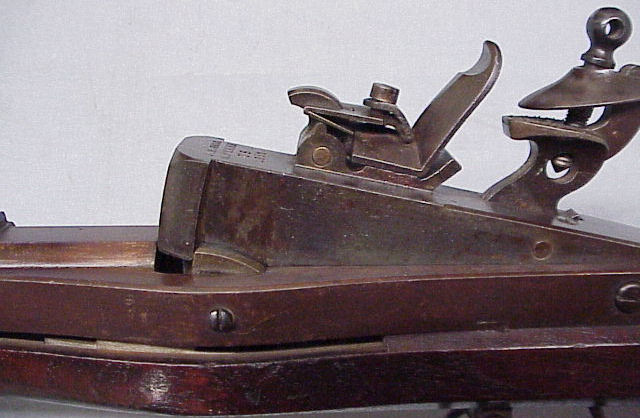

 |

|
|
Hall Breechloading Rifle
John H. Hall or Maine was issued a patent for a breechloading flintlock musket on May 21, 1811. 100 of Mr. Hall’s breechloaders were tested by the U.S. Army in the fall of 1813. Test were conducted with a 38-man company firing at their own speed. Hall’s breechloading weapon could fire almost 1,200 rounds in the same 10-minute time frame an Army-issued musket could only fire about 850 rounds. In addition, the weapon had a 36% change to hit a 100-yard target vs. only a 25% chance with a standard musket. The weapon wouldn’t be acquired by the US Army until January 1817, after the end of the war. The US 6th Regiment was supplied with Hall’s muskets and by 1843 at least 3,000 were in service. Since Mr. Hall’s primary customers prior to 1817 were sportsmen, there is a good chance some of the weapons were in use by militia troops during the War of 1812 (although no direct evident supports this). This may explain how the weapon came to the attention of the US Army in 1813. Over 6,000 would be supplied to state militia units after the war. It’s most unique feature is a second, reverse facing trigger forward of the main trigger. This second trigger allows the reap part of the barrel to swing up. This presented the opportunity for the operator to place a paper cartridge in the lower porting of the barrel. The main advantage would be the loading of the weapon from a prone position. A carbine, allowing the same advantage to cavalry wouldn’t be available until 1833. In any case, the Hall M1819 model was the first breechloading weapon to be adopted by any national army.
|